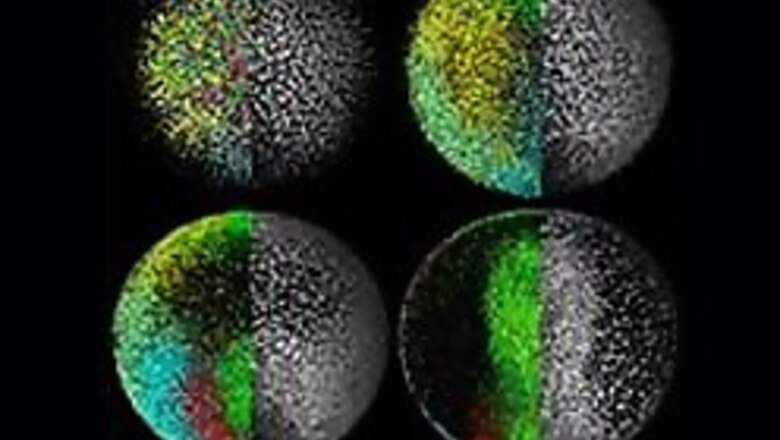
views
London: A new high-powered microscope has allowed scientists to watch a zebrafish develop from a single cell into an embryo with a beating heart, the first time this has been possible in vertebrates, researchers said on Thursday.
They created a three-dimensional digital reconstruction of the tiny, developing fish, which may provide insights into how human organs form and lead to a better understanding of the genetic underpinnings of some diseases, they said.
"This is like being able to watch an animal getting a life," said Joachim Wittbrodt, who led the study published in the journal Science while at the European Molecular Biology Laboratory in Heidelberg, Germany.
"You have a clump of cells that are transforming into an embryo with a beating heart while you are watching."
Scientists have already done this with invertebrates such as worms, which only have a few hundred cells, but until now replicating the feat in vertebrates, whose embryos comprise tens of thousands of cells, has been impossible, he said.
The German team overcame this hurdle by developing a microscope powerful enough to track tens of thousands of cells at the same time without requiring the kind of energy that would otherwise destroy or damage an embryo.
The microscope scans the embryo with what they call a sheet of light along many different directions, allowing a computer to then assemble a three-dimensional image that over time provides a complete view of the development, Wittbrodt said.
"The power is in the size and the resolution while at the same time being extremely gentle on the embryo and extremely fast, which you need to follow things that are moving," said Wittbrodt, now at the University of Heidelberg in Germany.
PAGE_BREAK
"It's like a huge puzzle and we can see the individual pieces. We see everything."
Zebrafish, also known as zebra danio, are popular research subjects because they are cheaper to breed than mice and share a number of similar biological traits with humans.
To develop into a complex organism, an embryo's cells must divide, travel around the body and arrange themselves into intricate shapes and specialized tissues. So far the researchers said they have identified how some of this cell migration is different to what was previously believed.
The microscope could also be used to examine mice, chickens and frogs, they said.
Eventually, such experiments could provide a better understanding of how tumors spread or why cells sometimes turn against the body in autoimmune diseases like arthritis, Wittbrodt said.
"There are many implications for humans," he said. "This is just the starting point."



















Comments
0 comment